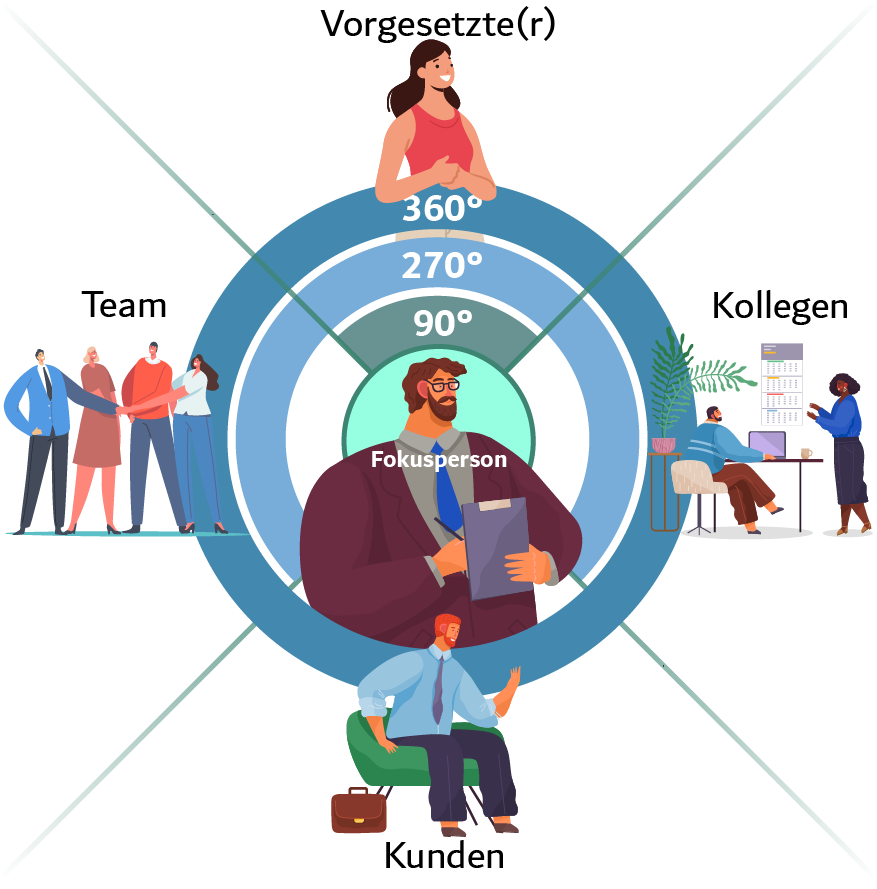The challenges of evaluating psychological stress in the workplace
Psychological stress at work is no longer a side issue. The dynamics of modern working environments, increasing pressure to perform, new technologies and hybrid forms of work have meant that companies are increasingly required to seriously address not only physical but also psychological risks.
Since the amendment to the Workers Protection Act (ASchG) in 2013, there has been a legal obligation in Austria to systematically evaluate psychological stress. But despite clear guidelines, practical implementation remains a challenge.
This article shows why a professional evaluation is necessary, which typical stumbling blocks there are and which scientifically based principles enable successful implementation.
Why evaluation of psychological stress is necessary
Psychological stress affects not only individual well-being, but also productivity, innovative strength and corporate loyalty. Studies show the increase in psychologically related sick leave and the negative consequences for the working environment. Common risk factors include:
📌 Organizational and management culture
- A lack of appreciation from supervisors or colleagues can significantly impair psychological well-being.
- Unclear communication, lack of objectives, or conflicting information often lead to uncertainty and frustration.
- An authoritarian or inconsistent management style can undermine employee trust and motivation.
📌 Work environment
- Noise exposure, poor lighting, or inadequate room temperatures can lead to permanent psychological exhaustion.
- A lack of ergonomic equipment not only affects physical health, but also has a negative effect on psychological well-being.
- Technical faults or inadequate infrastructure make everyday work difficult and create unnecessary stress.
📌 Work processes and working hours
- High time pressure and permanent workload increase the risk of overwork and burnout.
- Frequent interruptions and unstructured processes disrupt the workflow and make concentrated work difficult.
- Irregular working hours, shift work or lack of breaks put a strain on mental stability in the long term.
📌 Emotional demands
- Constantly dealing with difficult customers or conflict situations requires emotional stability and can be tiring in the long term.
- In certain professional groups, employees are expected to restrain their own emotions — which can lead to inner tension.
- Continuous accessibility and a lack of distinction between work and private life prevent urgently needed recovery phases.
A structured evaluation makes these risk factors visible and creates the basis for targeted improvement measures.
Legal basis: The Workers Protection Act (ASchG)
The legal obligation to evaluate psychological stress is enshrined in the Workers Protection Act. Since 2013, companies have therefore been required to evaluate psychological stress and involve employees. Based on the evaluation, working conditions hazardous to mental health should be assessed using appropriate methods. The evaluated risks should then be mitigated or even completely eliminated using preventive and acute measures. Workplace evaluation is a process with the purpose of continuously improving working conditions.
Companies must:
- Systematically collect and document risks: This includes a comprehensible survey of the relevant stress factors in the operational environment.
- Derive and implement measures: The data collected must be translated into concrete measures to relieve the burden.
- Check the effectiveness of the measures regularly: It is only through evaluation that it is possible to understand whether the measures taken are actually effective.
- Risk penalties for non-compliance: The Labour Inspectorate may impose severe fines in the event of violations.
Despite these clear requirements, implementation often fails due to structural, cultural or methodological hurdles.
Typical challenges
Lack of awareness of the problem
Psychological stress is often not recognized as an objective risk. In some companies, stress or exhaustion is still considered a sign of commitment. This results in burdens being ignored or minimized — which can lead to burnout or high turnover in the long term.
Resistance & anxiety
Executives fear that weak points will be revealed. Employees, on the other hand, are afraid of consequences if they address burdens — such as disadvantages of promotions. Trust and anonymity are crucial for honest feedback.
Methodological uncertainty
Which questions are relevant? How do you collect valid and at the same time GDPR-compliant data? Which instruments are suitable? Many companies lack methodological know-how or suitable tools.
Nielsen & Randall (2013) emphasize the importance of a process-oriented, participatory approach that actively involves employees in interpreting and deriving measures. Krosnick & Presser also show that questionnaire design, response formats and scaling have a significant impact on the quality of data collection (Krosnick & Presser 2010, p. 274). Bauknecht et al. (2011) also warn against the “pseudo-accuracy” of standardized procedures without operational contextualization.
Lack of implementation
Even when problems are identified, the concrete implementation of improvements often fails. Results are often pigeonholed up because resources are lacking or responsibilities are not clear. As a result, the evaluation process loses credibility. Studies such as those by Badura et al. (2010) show that companies with a health-promoting culture are more successful in the long term.
Success factors for effective evaluation processes
Research shows that a legally compliant risk assessment carried out in isolation is often not enough. An effect only develops when the following factors are taken into account:
1. Participation at all levels
A successful evaluation process depends on the active involvement of all relevant groups in the company — from management to managers and employees. Only when all perspectives are taken seriously and integrated into the process can trust and a sustainable basis for change be created.
2. Integration into organizational development
The evaluation of psychological stress should not be regarded as an isolated project, but as part of an overarching strategy for the further development of the organization. In this way, results can be effectively integrated into ongoing development processes, such as change initiatives or cultural projects, and used sustainably.
3. Scientifically based survey design
A professional evaluation process is based on validated methods, differentiated questionnaires and a reliable data basis. Scientifically based survey tools ensure that psychological stress can be differentiated and reliably evaluated.
4. Systematic action planning and evaluation
Findings from the evaluation must be consistently translated into concrete measures. A structured implementation process with clear responsibilities, priorities and regular review ensures that changes actually have an impact and can be continuously developed.
5. Create spaces for reflection and dialogue
Results only develop their full potential when they are discussed openly and reflected on together. Dialogue formats such as workshops, team meetings or management dialogues promote a common understanding, strengthen the assumption of responsibility and create the basis for sustainable change.
conclusion
The evaluation of psychological stress in the workplace is not a “nice-to-have” but a central element of modern, responsible corporate governance — not only from a legal perspective, but above all from a business perspective. It makes it possible to make invisible risks visible, to act preventively and to ensure the health and performance of employees in the long term. However, this requires more than standardized questionnaires: Successful evaluation processes are characterized by participation, involvement in organizational development, scientific foundation and continuous implementation of measures. Reflection and dialogue on equal terms also create the necessary space to effectively anchor results. Companies that consistently follow this path not only benefit from healthier employees — but also from a sustainably strengthened corporate culture.
EUCUSA offers a holistic approach that goes far beyond mere surveys: With tailor-made questionnaires, scientifically based methodology and the digital tool platform E-FEMO EUCUSA supports companies from the initial concept to sustainable implementation. Particular attention is paid to trusting, participatory cooperation and a clearly structured process of measures — so that feedback produces measurable effects.








